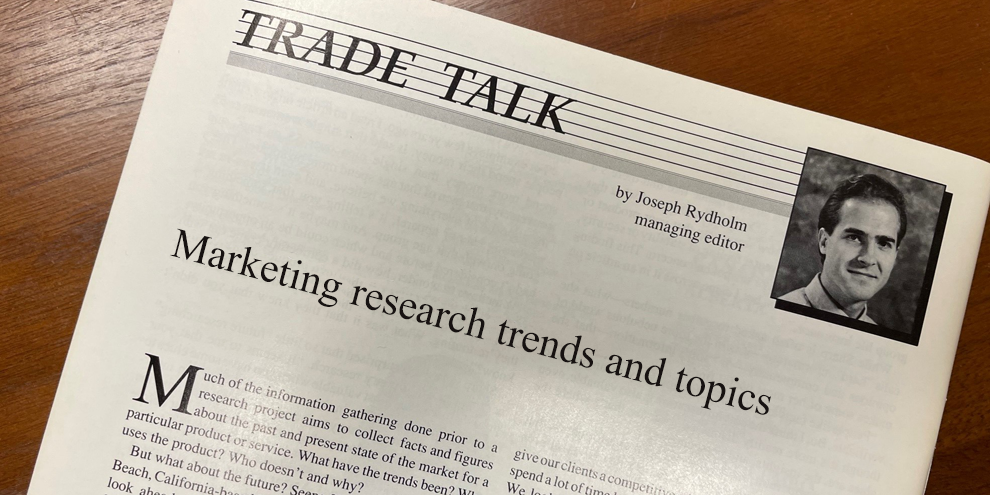Do you know which age group spends 50% more per household than the average American household on pet food? Or which age group has a 40% higher than average weekly expenditure on beef, pork, fish/seafood, and eggs?
Page through the 1990-1991 Almanac of Consumer Markets and you'll find out. Using statistics from government sources such as the Bureau of the Census, Bureau of Labor, the Federal Reserve, and the National Center for Health Statistics, Almanac author Margaret K. Ambry has distilled mountains of data into just over 400 pages of information on all aspects of the U.S. population.
Each of the Almanac's nine chapters examines the current and future characteristics of a specific consumer age group, such as those aged 18 to 24, or 75 and older, in the areas of health, education, employment, marital status, income, expenditures, and others. Each section begins with a quick-reference page of demographic highlights for its age group.
Ambry, who holds a Ph.D. in demography and consumer economics from Cornell University, says she organized the book by age to make it easy to use.
"When I started organizing by age group I found that a lot of the data is published with composite age groups or has been collected by asking people whether their age falls under these large categories,so it's often hard to get good age data. After realizing the difficulties that the average person would encounter, it encouraged me to go on with that format because it would simplify and make the data user friendly.
"I think that every consumer product has an age target, whether it's broad or narrow. This organization provides a window for users that lets them access an age group and look at all of the satellite information that's attached to that age group, such as purchase behavior and other economic attributes, demographics, etc."
The Almanac is subtitled "A guide to today's more complex and harder-to-find customers," which Ambry says reflects the effects that a host of demographic, economic, and societal trends are having on the marketplace.
"Consumer complexity is the result of other trends like migration patterns, labor force behavior, and decreasing economic and social necessity for marriage, that have spawned a variety of post-traditional lifestyles."
As an example Ambry cites the 45 to 54 year-old woman. In 1950, 38% of them were in the workforce, and almost 80% lived with their husbands.
"Now, they're still likely to be married - about 72% of them are - but during the 1990's the number of these middle aged women who will be living alone is going to increase faster than among any other age group. By the year 2000, three quarters of them will be in the workforce, and about 15 percent will have always been empty nesters, which is the highest rate of childlessness we've had since the Depression. They also may not lose their older children; we find that about half of 18 to 24 year-olds still live at home and of those that leave another half are back within two years.
"In general, the growth in the number of consuming units - people and households - is slowing and will grow at a slower rate in the future as compared to the recent past. New customers and increased sales won't come naturally from expanding markets and that' s what I meant by'harder-to-find.' The growth in sales will not come as predictably as it has in the past."
For example, while one out of every three states will see population growth of less than one percent in the 1990s, states such as Arizona, Florida, and Nevada will see growth of more than 20 percent during the same time period.
"You have these wildly different growth patterns, not to mention the growth patterns among the age groups where you have the 25 to 34 year-olds declining by 15 percent and the 45 to 54 year-olds jumping up almost 50 percent. What businesses need to investigate is where their opportunities lie in these very diverse growth patterns. Overall the population is increasing by less than one percent a year, but that doesn't mean that that's what happening where you live.
"(Marketers) have to find their opportunity by understanding where the growth is and where the largest increases in number are. There are no more stereotypes that marketers can rely on to get a handle on their customers and really get to know who they are. I think any business person, whether they are an entrepreneur, a marketing person, or a strategist for a large company, can profit from learning more about who their customers are and how these groups are changing over time."
By the way, the answers to the questions in the introduction are as follows: households headed by people aged 75 and older spend 50% more on pet food than the average American household, those headed by 45-54 year-olds spend 40 percent more than average on beef, pork, fish/seafood, and eggs.
(The 1990-1991 Almanac of Consumer Markets is available for $59.95 plus $3 per copy for shipping and handling from American Demographics Press, P.O. Box 68, Ithaca, NY, 14851. Telephone 800-828-1133.)
